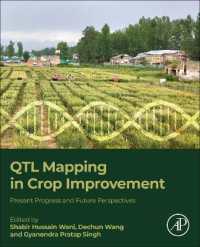Full Description
Using human skeletal remains, this volume traces health, workload and violence in the European population over the past 2,000 years. Health was surprisingly good for people who lived during the early Medieval Period. The Plague of Justinian of the sixth century was ultimately beneficial for health because the smaller population had relatively more resources that contributed to better living conditions. Increasing population density and inequality in the following centuries imposed an unhealthy diet - poor in protein - on the European population. With the onset of the Little Ice Age in the late Middle Ages, a further health decline ensued, which was not reversed until the nineteenth century. While some aspects of health declined, other attributes improved. During the early modern period, interpersonal violence (outside of warfare) declined possibly because stronger states and institutions were able to enforce compromise and cooperation. European health over the past two millennia was hence multifaceted in nature.
Contents
1. The European History of Health project: introduction to goals, materials, and methods Richard H. Steckel, Clark Spencer Larsen, Charlotte A. Roberts and Joerg Baten; 2. Contextual dimensions of health and lifestyle: isotopes, diet, migration, and the archaeological and historical records Rimantas Jankauskas and Gisela Grupe; 3. Measuring community health using skeletal remains: a health index for Europe Richard H. Steckel and Anna Kjellström; 4. The history of European oral health: evidence from dental caries and antemortem tooth loss Ursula Witwer-Backofen and Felix Engel; 5. Proliferative periosteal reactions: assessment of trends in Europe over the past two millennia Carina Marques, Vitor Matos and Nicholas J. Meinzer; 6. Growth disruption in children: linear enamel hypoplasias Zsolt Bereczki, Maria Teschler-Nicola, Antonia Marcsik, Nicholas Meinzer and Joerg Baten; 7. History of anemia and related nutritional deficiencies: evidence from cranial porosities Anastasia Papathanasiou, Nicholas J. Meinzer, Kimberly D. Williams and Clark Spencer Larsen; 8. Agricultural specialization, urbanization, workload and stature Nicholas Meinzer, Richard H. Steckel and Joerg Baten; 9. History of degenerative joint disease in people across Europe - bioarchaeological inferences about lifestyle and activity from osteoarthritis and vertebral osteophytosis Kimberly D. Williams, Nicholas J. Meinzer and Clark Spencer Larsen; 10. The history of violence in Europe: evidence from cranial and postcranial bone trauma Joerg Baten and Richard H. Steckel; 11. The developmental origins of health and disease: early life experiences and adult age at death in Europe: evidence from skeletal remains Charlotte A. Roberts and Richard H. Steckel; 12. Climate and health: Europe from the pre-Middle Ages to the nineteenth century Richard H. Steckel and Felix Engel; 13. Multidimensional patterns of European health, work, and violence over the past two millennia Joerg Baten, Richard H. Steckel, Clark Spencer Larsen and Charlotte A. Roberts; 14. Data collection codebook Richard H. Steckel, Clark Spencer Larsen, Paul W. Sciulli and Phillip L. Walker; 15. Database creation, management, and analysis Charlotte A. Roberts, Richard H. Steckel and Clark Spencer Larsen.








